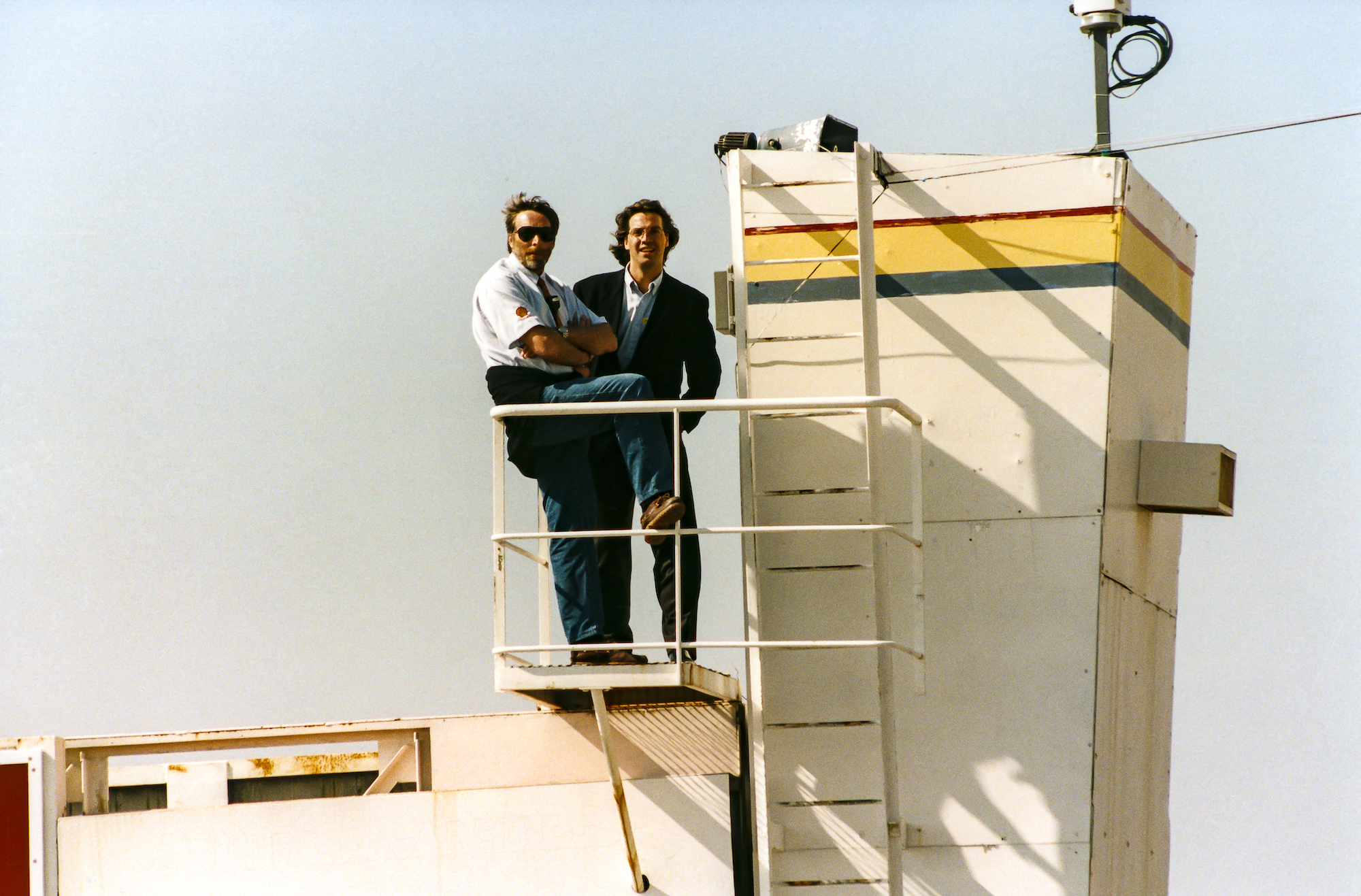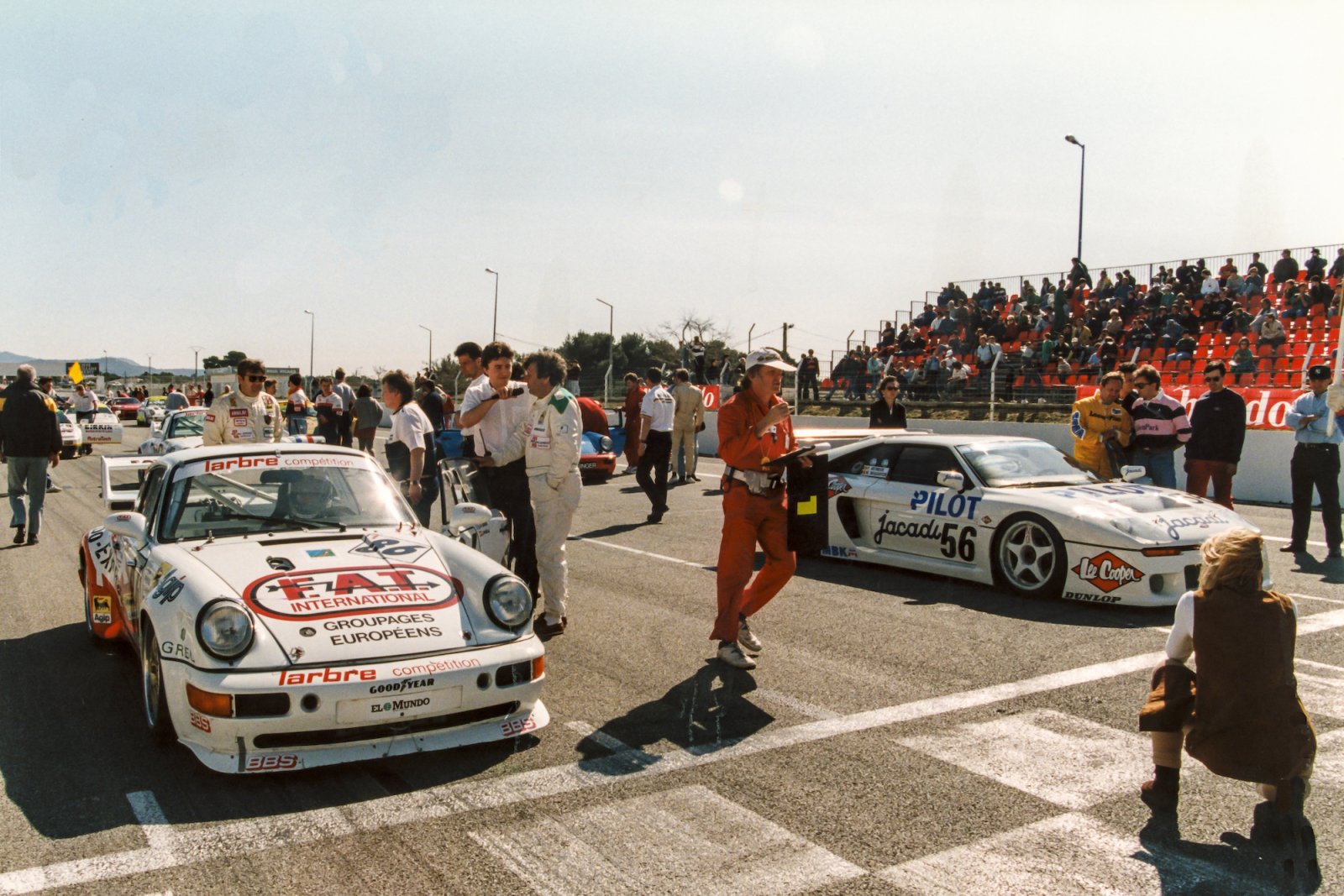On 6 March 1994 a grid of 38 cars assembled on the start-finish straight at Circuit Paul Ricard. A Porsche 911 overseen by Larbre Compétition sat on pole, alongside a Venturi 500 LM run by Michel Ferté's Pilot Jacadi outfit. Behind them were several more Porsches, a handful of Lotus Esprit S300s, and a small army of Venturi 400s.
A four-hour race lay ahead for the assembled group of drivers; many were amateurs, though names such as Jarrier, Wollek and Bernard added F1 and top-level sportscar experience to the entry list. Under the pale blue skies and chill spring air, it must have seemed like just another Sunday at the track. No one could have imagined that it would be remembered, 30 years later, as the rebirth of international GT racing.
This was the first outing for the new BPR Global GT Series, a sequence of eight events (the '94 season did not award titles) that established Stéphane Ratel, then one of the three partners in the BPR organisation, from a single-make series promoter to a more recognised international race organiser. Coincidentally, the 14th Fanatec GT World Challenge Europe Powered by AWS season – which began life as the Blancpain Endurance Series in 2011 – also starts at Circuit Paul Ricard this weekend, thus becoming SRO's longest-standing international series.
But there is a sense in which it has existed for much longer, as a direct continuation of what started with the BPR and developed further between 1997 and 2009 as FIA GT. While the names may have changed, the blueprint created 30 years ago has endured. Indeed, every series that SRO oversees around the world today can trace its roots back to that maiden event.
“I have always felt that this series – whether it was called BPR, FIA GT, Blancpain GT or Fanatec GT World Challenge Europe – began in 1994,” says Stéphane Ratel, who established BPR alongside Patrick Peter and Jürgen Barth. “It has been a continuous development from that point onwards. We have seen many changes along the way, but we did not go back to the beginning.
“The fact that we start the 2024 season at Circuit Paul Ricard is complete coincidence. But to my mind it is a very happy coincidence because it underlines the history that this series has created. After all, 30 years is a very long time in motorsport.”
Naturally, some things have changed. While modern GT racing is celebrated for remarkably close competition, the 1994 opener was dominated by the Larbre Porsche. It qualified an astonishing 3.2 seconds clear of its front-row rival and, come Sunday, the crew of Jarrier/Wollek/Pareja vanished into the distance, finishing two laps to the good. At the same track, the entire 55-car Fanatec GT Europe field is likely to be separated by around three seconds in qualifying, while less than one will cover the 20-strong Pro category.
The first two finishers in 1994 – both Porsches – were competing in the GT1 class. Then as now the series featured a variety of different cars, though in the days before Balance of Performance they were separated by their capabilities rather than driver line-up. There was a very broad GT3 class (also won by Larbre) and a class for the many Venturi Trophy cars, won by Eric de Doncker and Jean-Louis Sirera.
“When we launched the BPR, there was really nothing else like it,” says Stéphane. “GT racing had been forgotten by most organisers, but the end of the FIA World Sportscar Championship in 1993 created a vacuum that the BPR was able to fill. You could say that we came along at the right time, but we had to build it all from scratch.”

Stéphane Ratel (right) with Jürgen Barth at Circuit Paul Ricard in 1994
That first season had a predominantly European feel but also hinted at the BPR partner’s wider, long-term ambitions by concluding with two events in Asia. The first was at Suzuka – and the famed Pokka 1000, no less – where BPR regulars raced against a host of domestic entries, before Zhuhai’s then new but now disused street circuit staged China’s first-ever international motor race.
From the start the BPR appealed to amateur drivers but brought a fully professional approach. Proven teams such as Larbre and Freisinger Motorsport confirmed this, as did the TV cameras that came to document the very first race. Indeed, at a time when GT racing appeared to be a thing of the past, it presented a convincing case that it was in fact the future. GT cars took centre stage and committed enthusiasts like Rocky Agusta and Philippe Charriol – both much missed today – could compete at a high level while also enjoying their sport.
The proof of any series is that the competitors return year after year. From that maiden race in 1994, Larbre Compétition would go on to win titles in FIA GT and claimed back-to-back 24 Hours of Spa wins after it became a GT race in 2001. The youngest driver on the grid, Alexander Mattschull, would race in SRO series for many years, eventually winning the Pro-Am class at the CrowdStrike 24 Hours of Spa in 2018. Chamberlain, Augusta, Bryner, Calderari, Charriol, De Doncker, Freisinger – all came back time and time again.
“I have to pay special tribute to Eric de Doncker,” continues Stéphane. “In 1992 he was a participant in the first-ever series that I organised, the Venturi Trophy. He was on the grid again for the first BPR race and now, all these years later, he will be racing in the Fanatec GT2 European Series Powered by Pirelli at Circuit Paul Ricard. The level of passion and commitment is incredible. Guys like this are the backbone of our sport.”
Three decades later customer GT racing has become a fundamental part of international motorsport, attracting a host of major manufacturers to prove the superiority of their creations. The modern GT3 formula is the global reference – and Fanatec GT Europe its flagship series – while GT4 remains remarkably strong and the new generation of GT2 machinery continues to grow.
Between them, there will be over 100 GT cars from more than a dozen manufacturers at the season-opening event in France. For a young fan watching in 2024, it might seem that this has always been the case, that GT racing has always existed as a thriving area of international motor racing. But there was a time when it appeared to be on the brink of extinction. The breakthrough in its recovery came 30 years ago, on a Sunday that seemed like any other, at Circuit Paul Ricard.
Photographs copyright John Brooks

